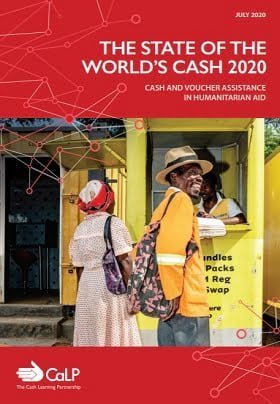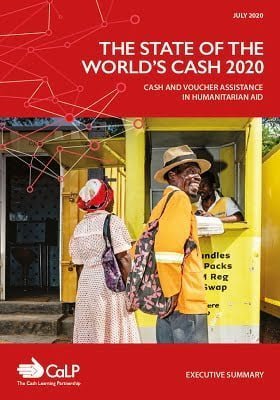State of the World’s Cash 2020 Chapter 8: Linking CVA and social protection
MAIN FINDINGS
Working with, through and alongside social protection systems is . Since 2017, action by humanitarians in this space has grown, including pre-shock engagement.

![]() Robust social protection is a prerequisite to address the drivers of poverty prior to crises, respond better to recurrent crises, create long term solutions, and support those in need during crises. CVA should aim to complement robust social protection systems where they exist and contribute to their strengthening where they are weak or early-stage.
Robust social protection is a prerequisite to address the drivers of poverty prior to crises, respond better to recurrent crises, create long term solutions, and support those in need during crises. CVA should aim to complement robust social protection systems where they exist and contribute to their strengthening where they are weak or early-stage.
![]() There is no ‘one size fits all’ solution to linking CVA and social protection. Trade-offs between efficiency, effectiveness, accountability, and sustainability must be considered. The best approach will depend on context, existing systems, and timeframe.
There is no ‘one size fits all’ solution to linking CVA and social protection. Trade-offs between efficiency, effectiveness, accountability, and sustainability must be considered. The best approach will depend on context, existing systems, and timeframe.
![]() Linking will not always be appropriate and social protection systems may not meet all needs. In most contexts, in the short to medium term, humanitarian programming will be required to fill gaps.
Linking will not always be appropriate and social protection systems may not meet all needs. In most contexts, in the short to medium term, humanitarian programming will be required to fill gaps.
![]() In some contexts, it may be most appropriate for humanitarians to work independently of government systems.
In some contexts, it may be most appropriate for humanitarians to work independently of government systems.
![]() Linking processes are currently driven mainly by international humanitarian actors, especially UN, RCRCM and donors, reflecting a wider challenge of building ownership from governments and other local actors.
Linking processes are currently driven mainly by international humanitarian actors, especially UN, RCRCM and donors, reflecting a wider challenge of building ownership from governments and other local actors.
![]() Not all humanitarian actors are well placed to engage with social protection systems and linking is likely to be led by a small number. Others will have critical roles in focusing on gaps in coverage and inclusive approaches, particularly for marginalized populations including refugees and migrants.
Not all humanitarian actors are well placed to engage with social protection systems and linking is likely to be led by a small number. Others will have critical roles in focusing on gaps in coverage and inclusive approaches, particularly for marginalized populations including refugees and migrants.
PRIORITY ACTIONS
- Humanitarian and social protection actors should start from a focus on outcomes for affected people when considering if, how, where, and when to link CVA and social protection.
- Humanitarian and social protection actors should build on and collect further evidence to develop a clearer understanding of the different options for linking, using, or developing the systems that support CVA and social protection.
- Humanitarian and social protection actors should ensure better coordination in response analysis, preparation, sharing of tools, and allocation of roles between agencies working on social protection and disaster risk management, including national stakeholders, development, and humanitarian agencies.
- Donors should develop and fund longer term funding frameworks that encourage cooperation and coordination between humanitarian and development actors and greater programming flexibility.
Project leads
Further reading

The State of the World’s Cash 2020 – Full report
Report
Since the first State of the World’s Cash report we have seen huge developments in cash and voucher assistance (CVA), with a continued increase in scale driving changing roles and partnerships, and a growing emphasis on quality. This new report, State of the World’s Cash 2020, examines progress, changes, and challenges in the use of CVA within the rapidly shifting humanitarian landscape...

The State of the World’s Cash 2020 – Executive summary
Report
The State of the World’s Cash 2020 provides a comprehensive snapshot of cash and voucher assistance (CVA), with significant recommendations for anyone interested in humanitarian action. This report follows on from the first report, a seminal piece, published in 2018. Since then CVA has continued to grow and is now a major part of almost every humanitarian response. The total amount of CVA...



